22 Interesting Photos From Our Fascinating History
Kenneth Coo
Published
11/17/2017
in
wow
Take a trip back in time with these vintage images.
- List View
- Player View
- Grid View
Advertisement
-
1.
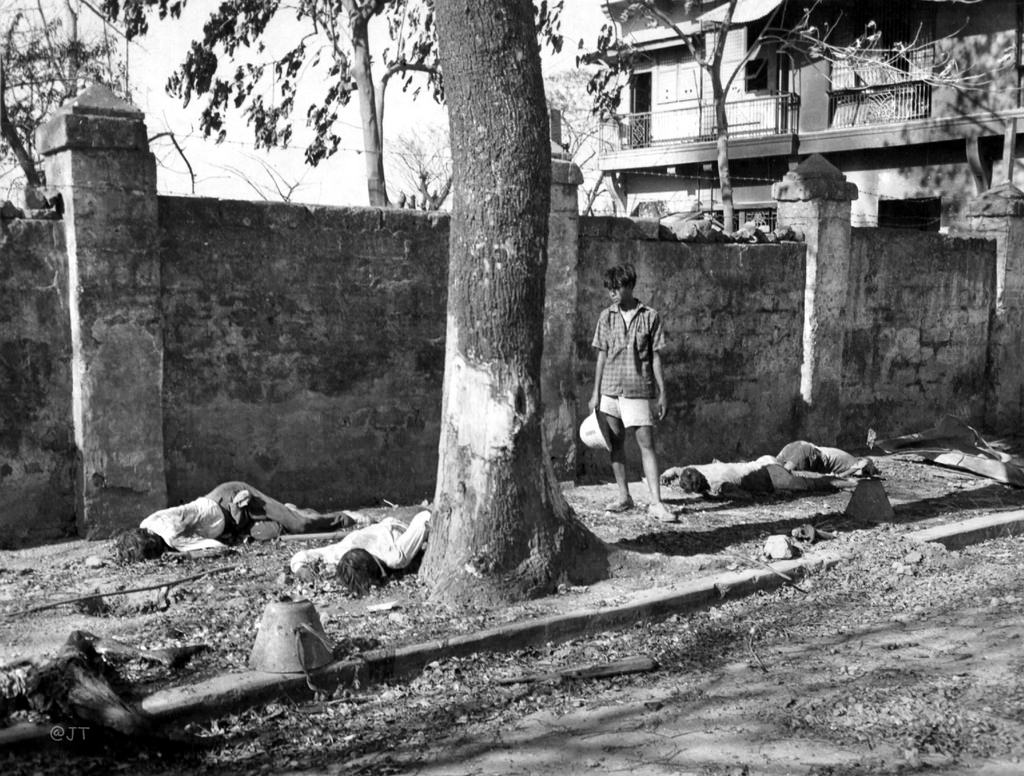 A man looks at murdered civilians during the Battle of Manila in the Philippines in 1945. The 1 month battle to retake the city from Japanese occupation proved costly for the populace, as the Japanese began routinely rounding up males of military age and shooting them. They also put people in concentrated areas as a form of a human shield to avoid artillery, as well as showing no regard for civilians during battles. General Douglas MacArthur did not allow these situations to deter him when he orchestrated his assaults, showing himself no sympathy towards civilian casualties. As a result, up to 240,000 civilians died in this battle. The city at times was full of the bodies of the civilian dead before it was finally liberated and those people could be buried.
A man looks at murdered civilians during the Battle of Manila in the Philippines in 1945. The 1 month battle to retake the city from Japanese occupation proved costly for the populace, as the Japanese began routinely rounding up males of military age and shooting them. They also put people in concentrated areas as a form of a human shield to avoid artillery, as well as showing no regard for civilians during battles. General Douglas MacArthur did not allow these situations to deter him when he orchestrated his assaults, showing himself no sympathy towards civilian casualties. As a result, up to 240,000 civilians died in this battle. The city at times was full of the bodies of the civilian dead before it was finally liberated and those people could be buried. -
2.
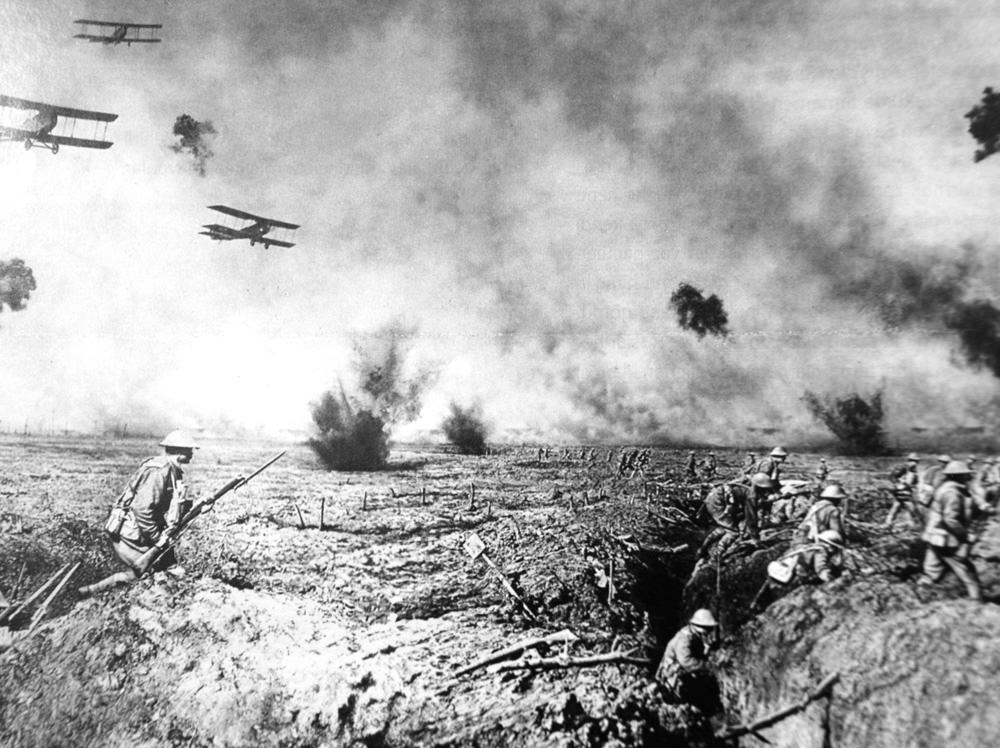 Allied planes help support an assault in France during WWI in 1917. The planes would use their machine guns down at the enemy lines, and once close enough, would physically drop bombs out of the plane onto enemy positions. The rear gunner would then fire back at the enemy as they passed. Due to timing of the assaults, 1-2 passes at most would be done. It was also done within striking distance of the enemy, causing many pilots and planes to be downed. Not only that, this method wasn't very effective. WWI was a war of old tactics with modern weapons. The same ground being taken and lost over and over, with no side having a clear advantage for virtually the entire war.
Allied planes help support an assault in France during WWI in 1917. The planes would use their machine guns down at the enemy lines, and once close enough, would physically drop bombs out of the plane onto enemy positions. The rear gunner would then fire back at the enemy as they passed. Due to timing of the assaults, 1-2 passes at most would be done. It was also done within striking distance of the enemy, causing many pilots and planes to be downed. Not only that, this method wasn't very effective. WWI was a war of old tactics with modern weapons. The same ground being taken and lost over and over, with no side having a clear advantage for virtually the entire war. -
3.
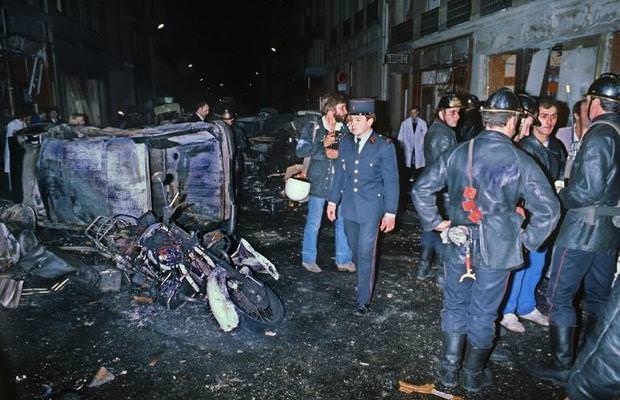 French police and fire fighters examine the damage after a bomb was detonated in Paris, France in 1980. The target was a Synagogue, the first attack in France against Jews since WWII. This attack killed 4 people and wounded dozens more. In the early 1980s, France experienced a heavy wave of Terrorist attacks, especially against Jews, from extremists fighting for Palestine and other radical Arab groups. Carlos the Jackal is the most well known captured terrorist from this time period, as he is serving a life sentence for orchestrated at least 5 bombings that killed 16 people.
French police and fire fighters examine the damage after a bomb was detonated in Paris, France in 1980. The target was a Synagogue, the first attack in France against Jews since WWII. This attack killed 4 people and wounded dozens more. In the early 1980s, France experienced a heavy wave of Terrorist attacks, especially against Jews, from extremists fighting for Palestine and other radical Arab groups. Carlos the Jackal is the most well known captured terrorist from this time period, as he is serving a life sentence for orchestrated at least 5 bombings that killed 16 people. -
4.
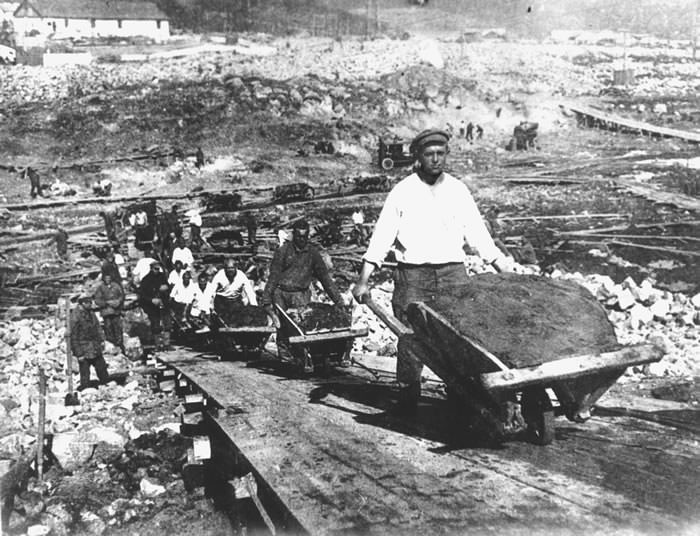 Prisoners work at Belbaltlag, a Gulag camp for building the White Sea-Baltic Sea Canal in Russia in 1932. Russia under communism utilized forced manual labor for almost all their projects. From captured WWII German prisoners, to political prisoners, to Polish, Ukrainian, and Hungarian civilians, many people would work nonstop building the advancements of the USSR. The conditions were brutal at times, and the guards relentless. Many would die, and their bodies thrown in mass graves. Relatives wouldn't always even be notified of a family members death either. This continued for most of the USSR's existence.
Prisoners work at Belbaltlag, a Gulag camp for building the White Sea-Baltic Sea Canal in Russia in 1932. Russia under communism utilized forced manual labor for almost all their projects. From captured WWII German prisoners, to political prisoners, to Polish, Ukrainian, and Hungarian civilians, many people would work nonstop building the advancements of the USSR. The conditions were brutal at times, and the guards relentless. Many would die, and their bodies thrown in mass graves. Relatives wouldn't always even be notified of a family members death either. This continued for most of the USSR's existence. -
5.
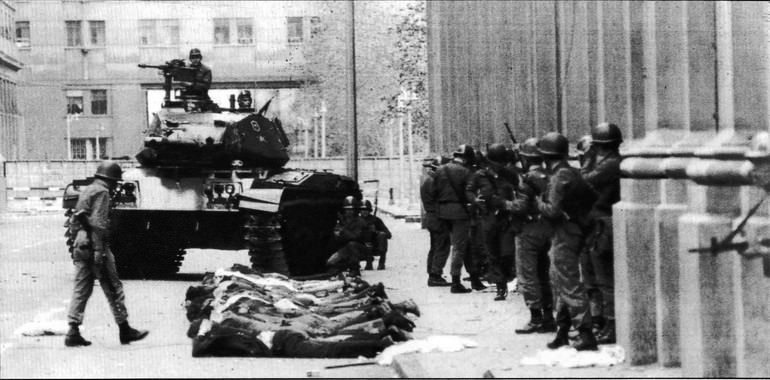 Military units using heavy armor descend on government buildings in Montevideo, Uruguay during a military coup in 1973. The coup overthrew the democratically elected government, using the concern of Marxist guerillas taking over, and began a 12 year dictatorship with a military junta in support. The Uruguayans actually had little bloodshed during the coup, and would have a general strike uprising against the dictatorship in 1984. This also had little bloodshed unlike most uprisings over dictatorships, and it would be accepted. The Junta and dictatorship government was dissolved and democracy restored. Most Central and South American countries had dictators at some point, and most had bloody overthrows, so this is a rare instance in which such grand events happened and happened quickly with overall little bloodshed.
Military units using heavy armor descend on government buildings in Montevideo, Uruguay during a military coup in 1973. The coup overthrew the democratically elected government, using the concern of Marxist guerillas taking over, and began a 12 year dictatorship with a military junta in support. The Uruguayans actually had little bloodshed during the coup, and would have a general strike uprising against the dictatorship in 1984. This also had little bloodshed unlike most uprisings over dictatorships, and it would be accepted. The Junta and dictatorship government was dissolved and democracy restored. Most Central and South American countries had dictators at some point, and most had bloody overthrows, so this is a rare instance in which such grand events happened and happened quickly with overall little bloodshed. -
6.
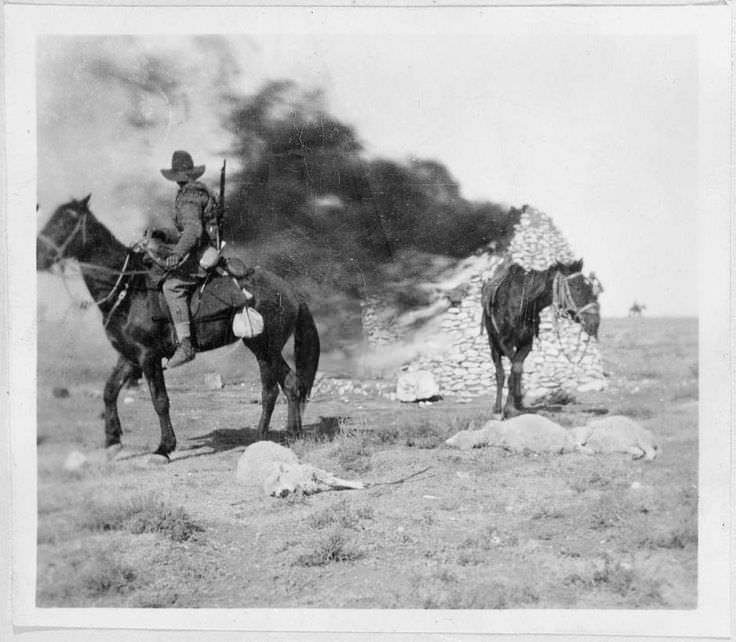 A Boer soldier overlooks a home after the British had burned it during The Second Boer War in 1901. Boer, which is a Dutch word for Farmer, was the name given to the mostly white Dutch settlers in British South Africa in the 1800s. During nearly the entire century, the Boers and British had disagreements, resulting in the brief First Boer War in 1880, which lasted just months. This, along with other conflicts caused the preparation and stockpiling of supplies by the Boers. When the Second Boer War started in 1899, which was an all out uprising seeking independence for the Boers, it lasted 3 years, and was brutal. The Boers worked like their own army at first, heavily supplied and struck first in hopes of quick victories to negotiate independence. However, the British response would be an ugly point in their history.
A Boer soldier overlooks a home after the British had burned it during The Second Boer War in 1901. Boer, which is a Dutch word for Farmer, was the name given to the mostly white Dutch settlers in British South Africa in the 1800s. During nearly the entire century, the Boers and British had disagreements, resulting in the brief First Boer War in 1880, which lasted just months. This, along with other conflicts caused the preparation and stockpiling of supplies by the Boers. When the Second Boer War started in 1899, which was an all out uprising seeking independence for the Boers, it lasted 3 years, and was brutal. The Boers worked like their own army at first, heavily supplied and struck first in hopes of quick victories to negotiate independence. However, the British response would be an ugly point in their history. -
7.
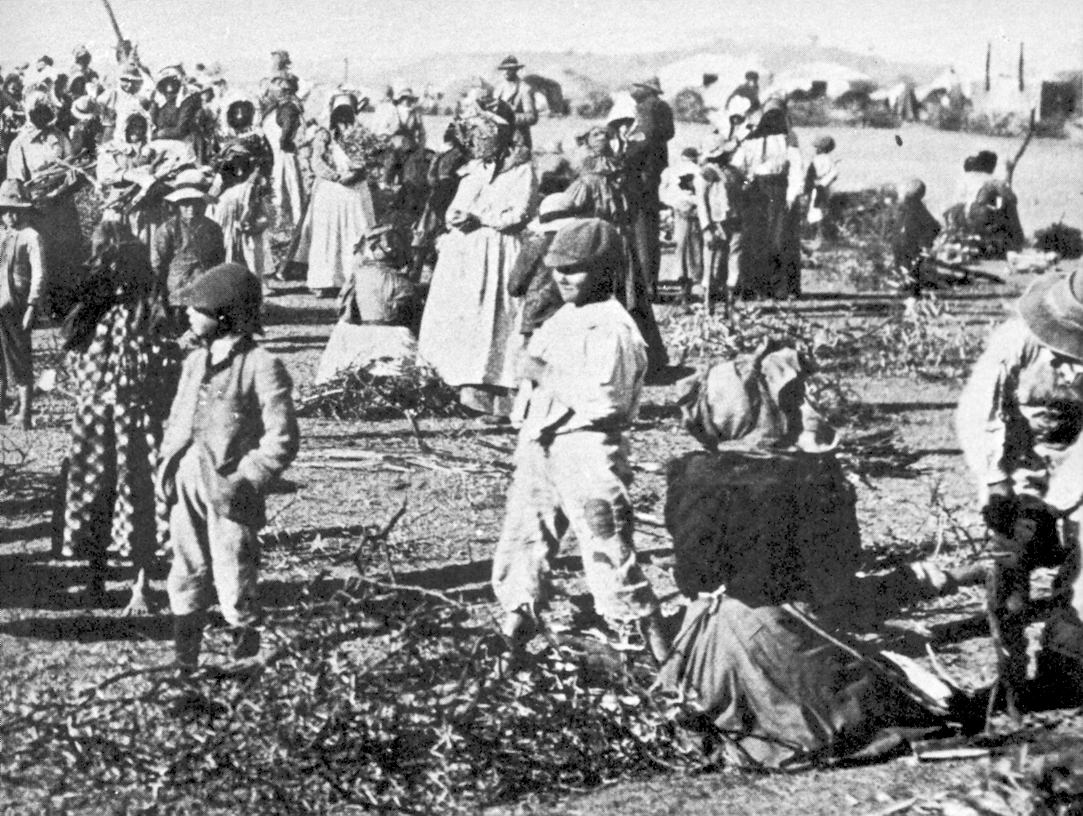 Continuing from the previous picture, this is a British Concentration Camp for Boer families in South Africa in 1901. The British retaliated against unexpected and heavy losses early in the war by burning the Boers homes and rounding up their women and children. They put them in camps, and let them die to diseases, malnutrition, and other ailments. The Boers were well armed, and used Guerilla Warfare effectively. The British ended up not being able to decipher the enemy, so they started operations against everyone. They literally destroyed entire towns and crops, using scorched earth tactics, which eventually starved the Boers as well. After the war, almost 50,000 Boer civilians, mostly women and children, died as a direct result of either being placed in concentration camps or starving to death. The Boer soldiers killed in battle were only 6,200 in comparison. The British also rounded up 115,000 black Africaans into camps, causing another 20,000 of them to die under the same circumstances. The British did win the war, and had nearly 50,000 casualties of their own, but their tactics were scrutinized as ugly and brutal against the Boer populace.
Continuing from the previous picture, this is a British Concentration Camp for Boer families in South Africa in 1901. The British retaliated against unexpected and heavy losses early in the war by burning the Boers homes and rounding up their women and children. They put them in camps, and let them die to diseases, malnutrition, and other ailments. The Boers were well armed, and used Guerilla Warfare effectively. The British ended up not being able to decipher the enemy, so they started operations against everyone. They literally destroyed entire towns and crops, using scorched earth tactics, which eventually starved the Boers as well. After the war, almost 50,000 Boer civilians, mostly women and children, died as a direct result of either being placed in concentration camps or starving to death. The Boer soldiers killed in battle were only 6,200 in comparison. The British also rounded up 115,000 black Africaans into camps, causing another 20,000 of them to die under the same circumstances. The British did win the war, and had nearly 50,000 casualties of their own, but their tactics were scrutinized as ugly and brutal against the Boer populace. -
8.

-
9.

-
10.

-
11.

-
12.

-
13.

-
14.

-
15.

-
16.

-
17.

-
18.
.jpg)
-
19.

-
20.

-
21.

-
22.

-
23.

-
24.

-
25.

-
26.

-
27.

-
28.

-
29.
.jpg)
-
30.

-
31.

-
32.

-
33.
 The aftermath from a B-25 bomber crashing into the Empire State Building 1945.
The aftermath from a B-25 bomber crashing into the Empire State Building 1945. -
34.
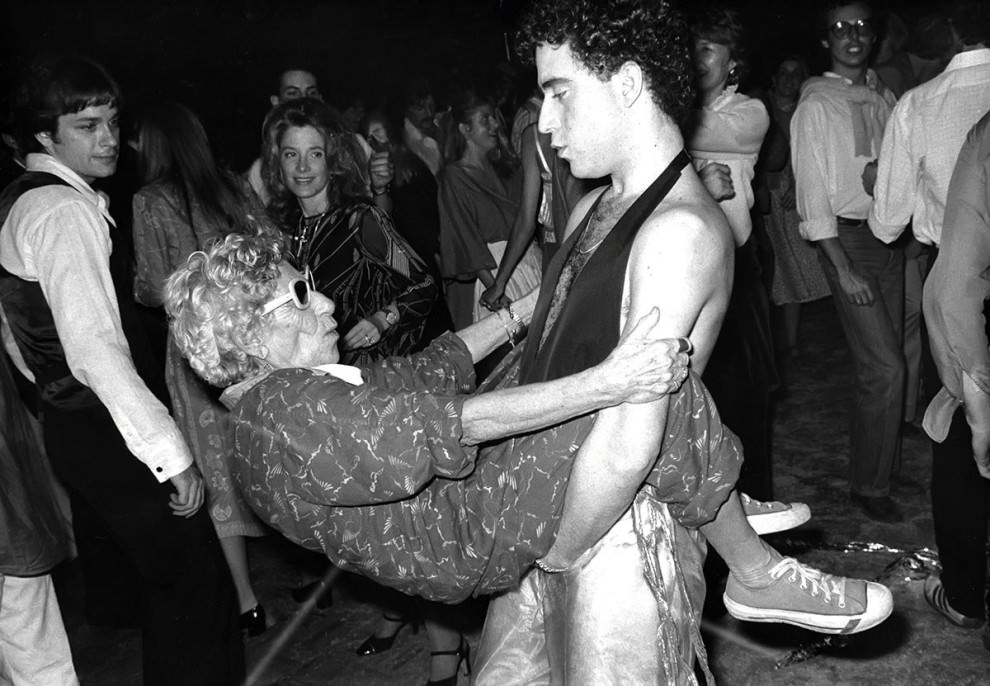 A regular patron known as Disco Granny dances at Studio 54 in 1978.
A regular patron known as Disco Granny dances at Studio 54 in 1978. -
35.
 NASA Before PowerPoint In 1961.
NASA Before PowerPoint In 1961. -
36.
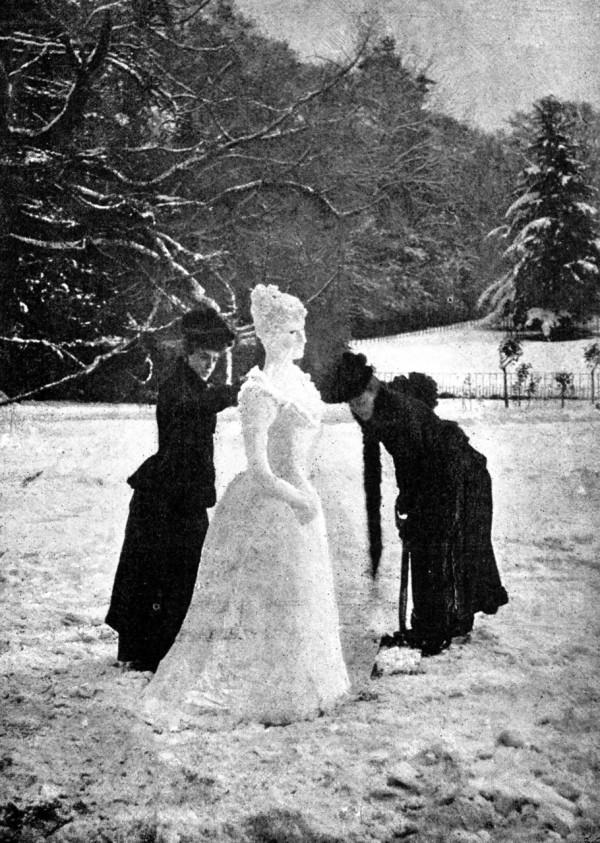 2 Women make a snow lady somewhere in New England, US in 1891.
2 Women make a snow lady somewhere in New England, US in 1891. -
37.
 The USS Maine after it exploded in Havana Harbor, Cuba in 1898. Of the 355 men on board, 260 died. Only 16 men total escaped uninjured. The ship was in the harbor to protect US interest during the Cuban War of Independence, and after an investigation, was said to be sunk by a Spanish mine. However, further evidence would show the explosion was almost certainly an accident within the ship. Regardless, US authorities used the incident to declare war on Spain, with the firm intention of conquering Spanish territory around the globe.
The USS Maine after it exploded in Havana Harbor, Cuba in 1898. Of the 355 men on board, 260 died. Only 16 men total escaped uninjured. The ship was in the harbor to protect US interest during the Cuban War of Independence, and after an investigation, was said to be sunk by a Spanish mine. However, further evidence would show the explosion was almost certainly an accident within the ship. Regardless, US authorities used the incident to declare war on Spain, with the firm intention of conquering Spanish territory around the globe. -
38.
 Dwight Eisenhower was the first U.S. President to use a teleprompter during the 1952 presidential campaign.
Dwight Eisenhower was the first U.S. President to use a teleprompter during the 1952 presidential campaign. -
39.
 U.S. Army prototype anti-armor hand grenade from 1973 – a shaped charge, packed in a hollowed-out NERF football.
U.S. Army prototype anti-armor hand grenade from 1973 – a shaped charge, packed in a hollowed-out NERF football. -
40.
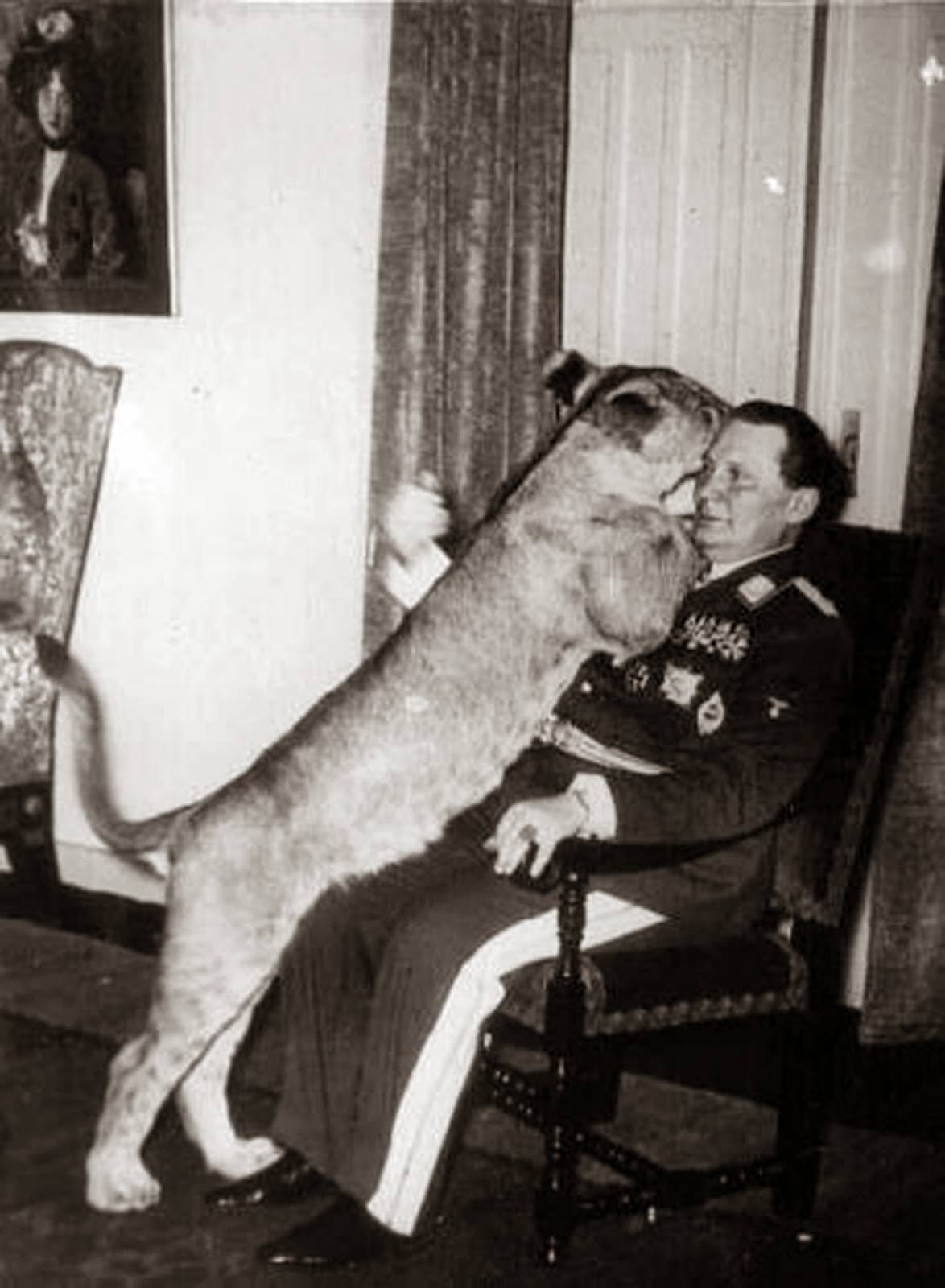 Hermann Göring with his pet lion at his home in Germany in 1936. Göring and his wife actually had a few lions as well as other exotic animals that they raised themselves, and spent a fortune feeding them at his home in their own small little zoo. He even helped protect endangered wild life during the war. He spent tons of money ensuring certain animals survival during WWII like the Polish Bison, something he never did for any people including his own.
Hermann Göring with his pet lion at his home in Germany in 1936. Göring and his wife actually had a few lions as well as other exotic animals that they raised themselves, and spent a fortune feeding them at his home in their own small little zoo. He even helped protect endangered wild life during the war. He spent tons of money ensuring certain animals survival during WWII like the Polish Bison, something he never did for any people including his own. -
41.
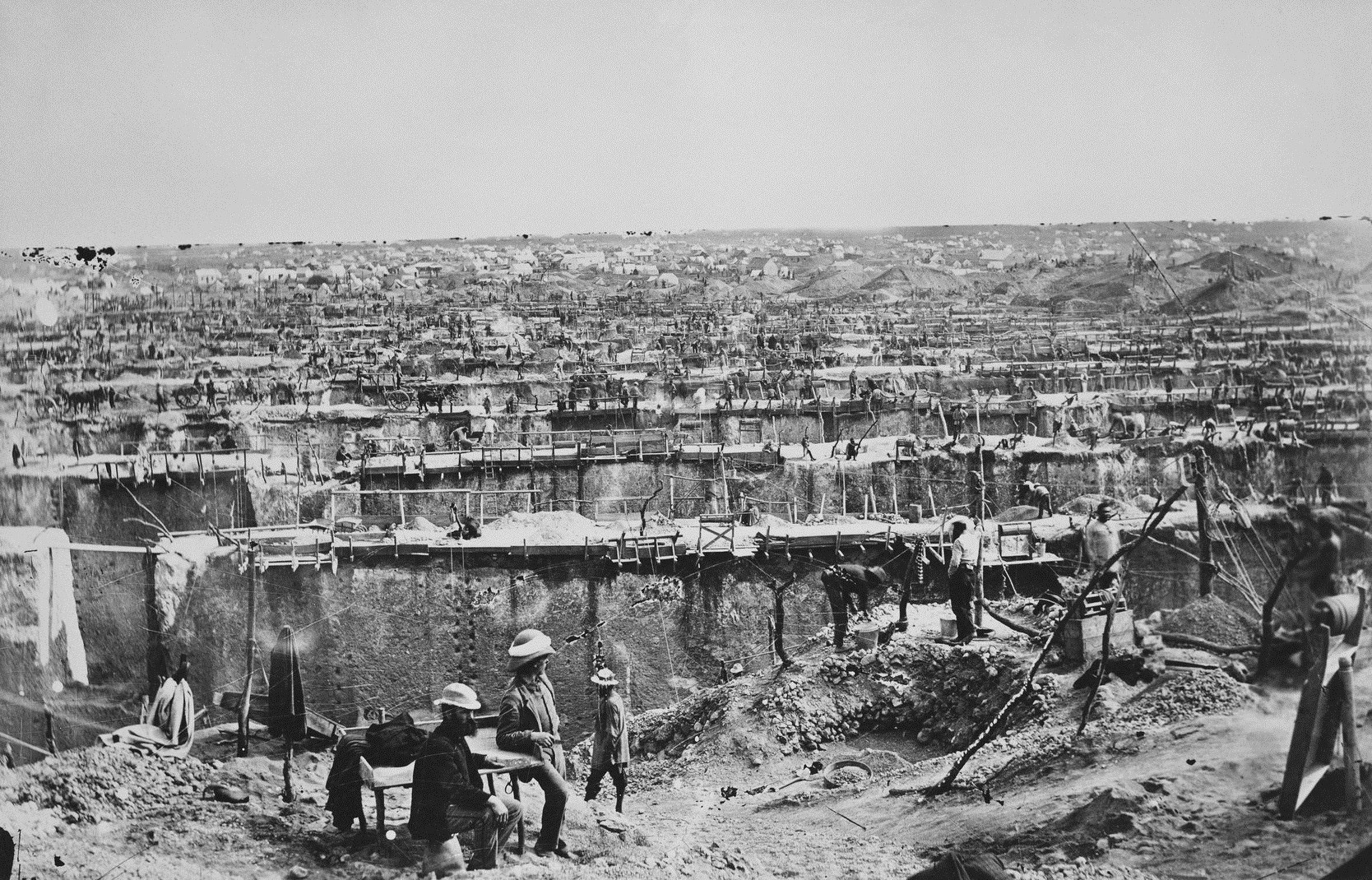 The Kimberley Diamond mine in South Africa in 1872. After a massive 83.5 carat diamond was found here, fortune hunters flocked to the area, with 800 land claims made near the mine. Similar to American gold rush towns, the mines would be heavily worked, and the claims would be bought up by bigger businesses, cutting the workers out of the fortunes of any diamond discoveries. The conditions were poor at times, and workers sometimes died. In reality, if all the diamonds mined in the last 150 years were on the market, even the top quality ones would cost no more than a nice pair of shoes.
The Kimberley Diamond mine in South Africa in 1872. After a massive 83.5 carat diamond was found here, fortune hunters flocked to the area, with 800 land claims made near the mine. Similar to American gold rush towns, the mines would be heavily worked, and the claims would be bought up by bigger businesses, cutting the workers out of the fortunes of any diamond discoveries. The conditions were poor at times, and workers sometimes died. In reality, if all the diamonds mined in the last 150 years were on the market, even the top quality ones would cost no more than a nice pair of shoes. -
42.
 Marilyn Monroe and Joe Dimaggio at the Fairmont Banff Hotel in Banff, Canada, five months before their wedding. August 19, 1953.
Marilyn Monroe and Joe Dimaggio at the Fairmont Banff Hotel in Banff, Canada, five months before their wedding. August 19, 1953. -
43.
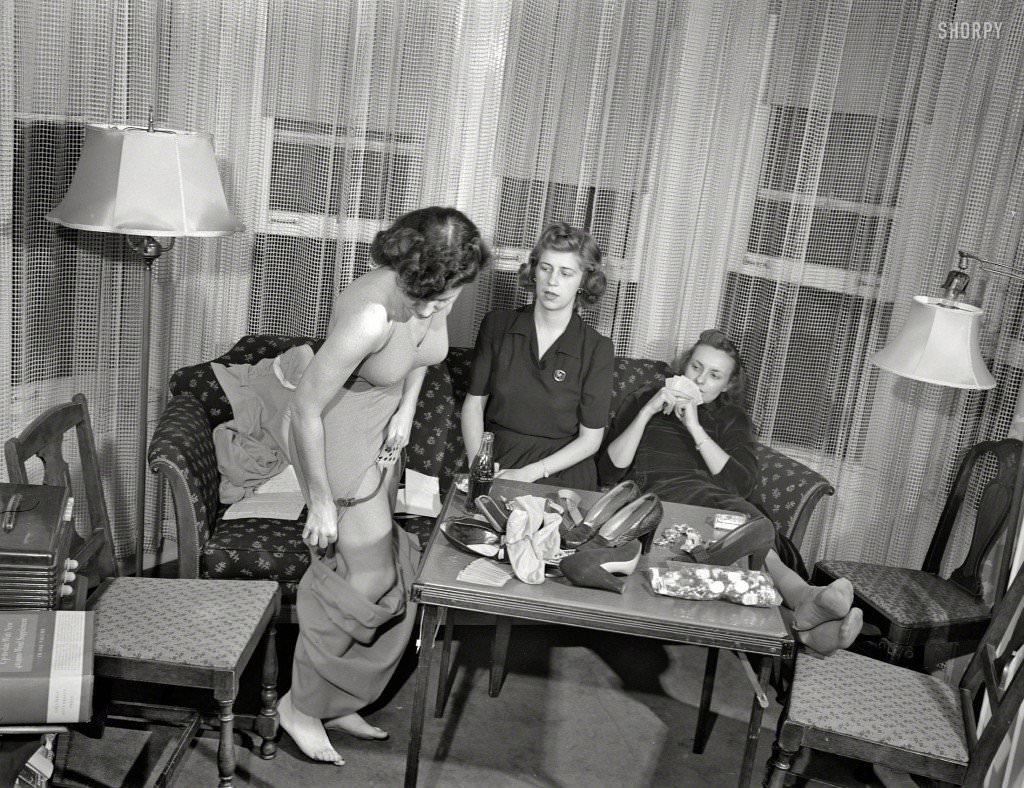 A special photo shoot showing 3 women playing Strip Poker in Detroit in 1941. This is what you might consider the porn of its time period, as nudity and other mainstream sexual exposure in the US was years away. This is the kind of thing put in a magazine to tease the reader into believing nudity was coming, which of course it was not.
A special photo shoot showing 3 women playing Strip Poker in Detroit in 1941. This is what you might consider the porn of its time period, as nudity and other mainstream sexual exposure in the US was years away. This is the kind of thing put in a magazine to tease the reader into believing nudity was coming, which of course it was not. -
44.
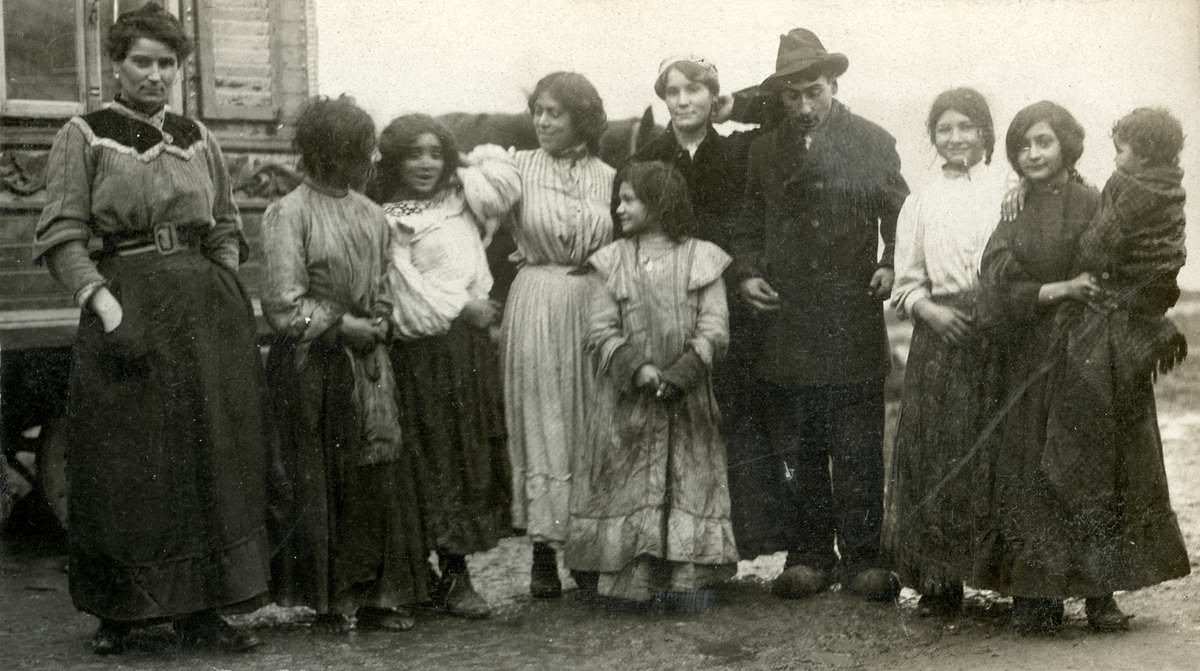 A Gypsy family from Eastern Europe (possibly Romania or Hungary) pose for a picture in the 1930s.
A Gypsy family from Eastern Europe (possibly Romania or Hungary) pose for a picture in the 1930s. -
45.
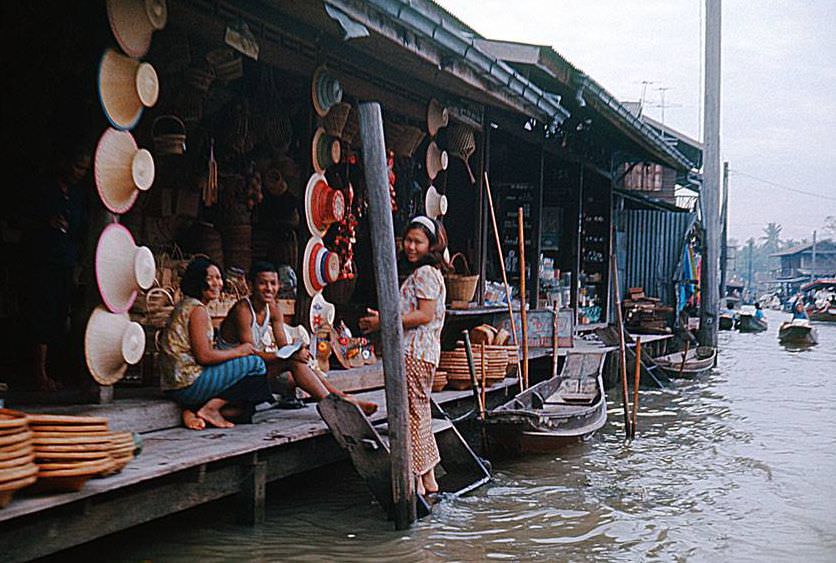 Amphawa Floating Market near Bangkok, Thailand in 1970. The famous market is centuries old, and operates exactly the same as it has since its beginning. Small boats move up and down the market, helping traders move goods. Today it is a popular tourist destination for unique items and terrific food. Most of the buildings designs in this picture are not far off from their original looks hundreds of years ago, outside of normal modern amenities and necessary upgrades.
Amphawa Floating Market near Bangkok, Thailand in 1970. The famous market is centuries old, and operates exactly the same as it has since its beginning. Small boats move up and down the market, helping traders move goods. Today it is a popular tourist destination for unique items and terrific food. Most of the buildings designs in this picture are not far off from their original looks hundreds of years ago, outside of normal modern amenities and necessary upgrades. -
46.
 Angelina Jolie and Jon Voight, 1986, Oscar night.
Angelina Jolie and Jon Voight, 1986, Oscar night. -
47.
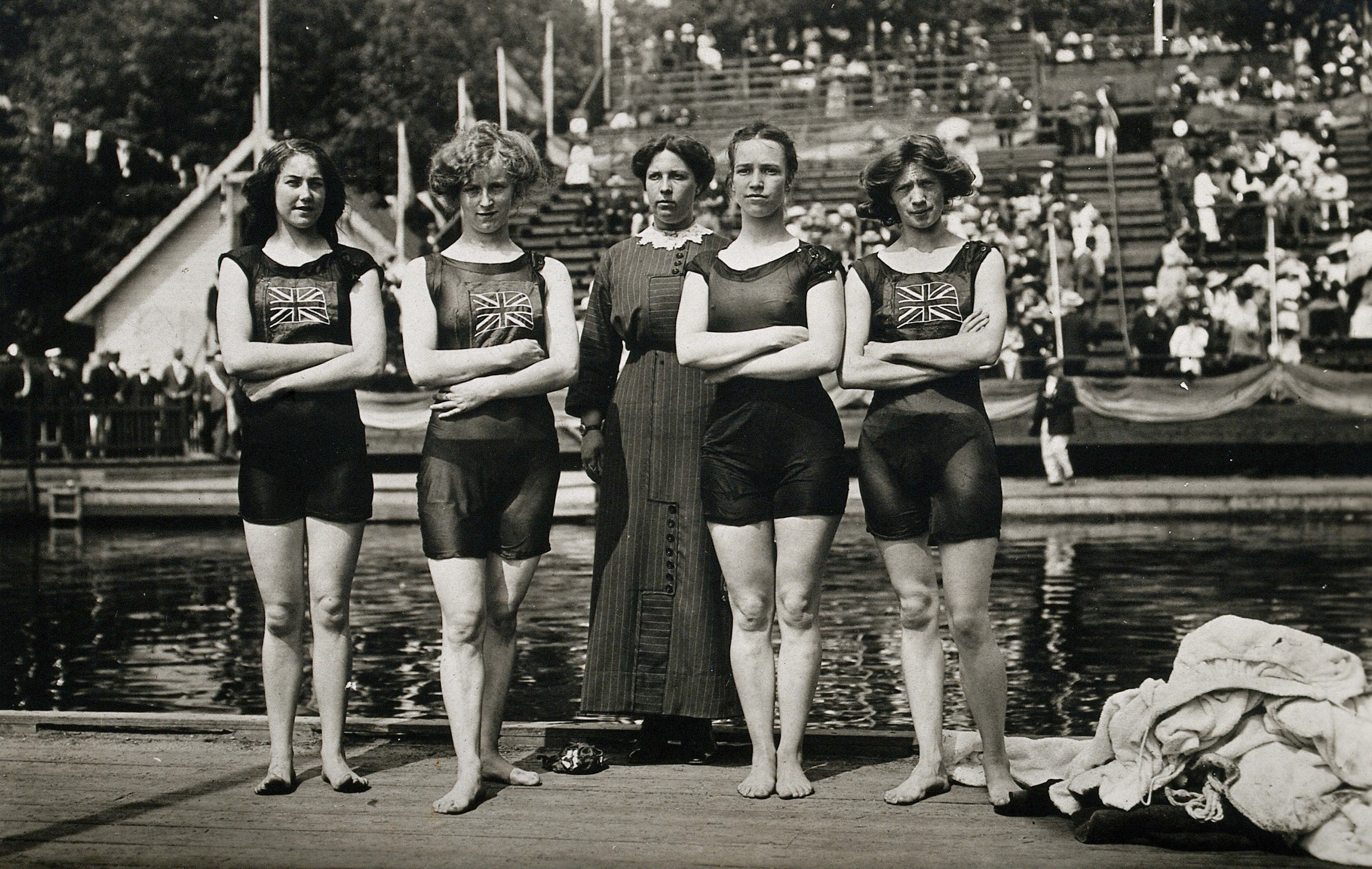 Belle Moore, Jennie Fletcher, Annie Speirs, and Irene Steer pose for a picture during the Stockholm Olympics in Sweden in 1912. The British swimming squad took home gold in the 4x100 Relay.
Belle Moore, Jennie Fletcher, Annie Speirs, and Irene Steer pose for a picture during the Stockholm Olympics in Sweden in 1912. The British swimming squad took home gold in the 4x100 Relay. -
48.
 Daytona Beach, 1957.
Daytona Beach, 1957. -
49.
 Gangster Mickey Cohen standing amongst the front pages of newspapers that helped make him the city’s’ most infamous citizen – 1960.
Gangster Mickey Cohen standing amongst the front pages of newspapers that helped make him the city’s’ most infamous citizen – 1960. -
50.
 Iranian woman in the era before the Islamic revolution by Ayatollah Khomeini. Iran, 1960.
Iranian woman in the era before the Islamic revolution by Ayatollah Khomeini. Iran, 1960. -
51.
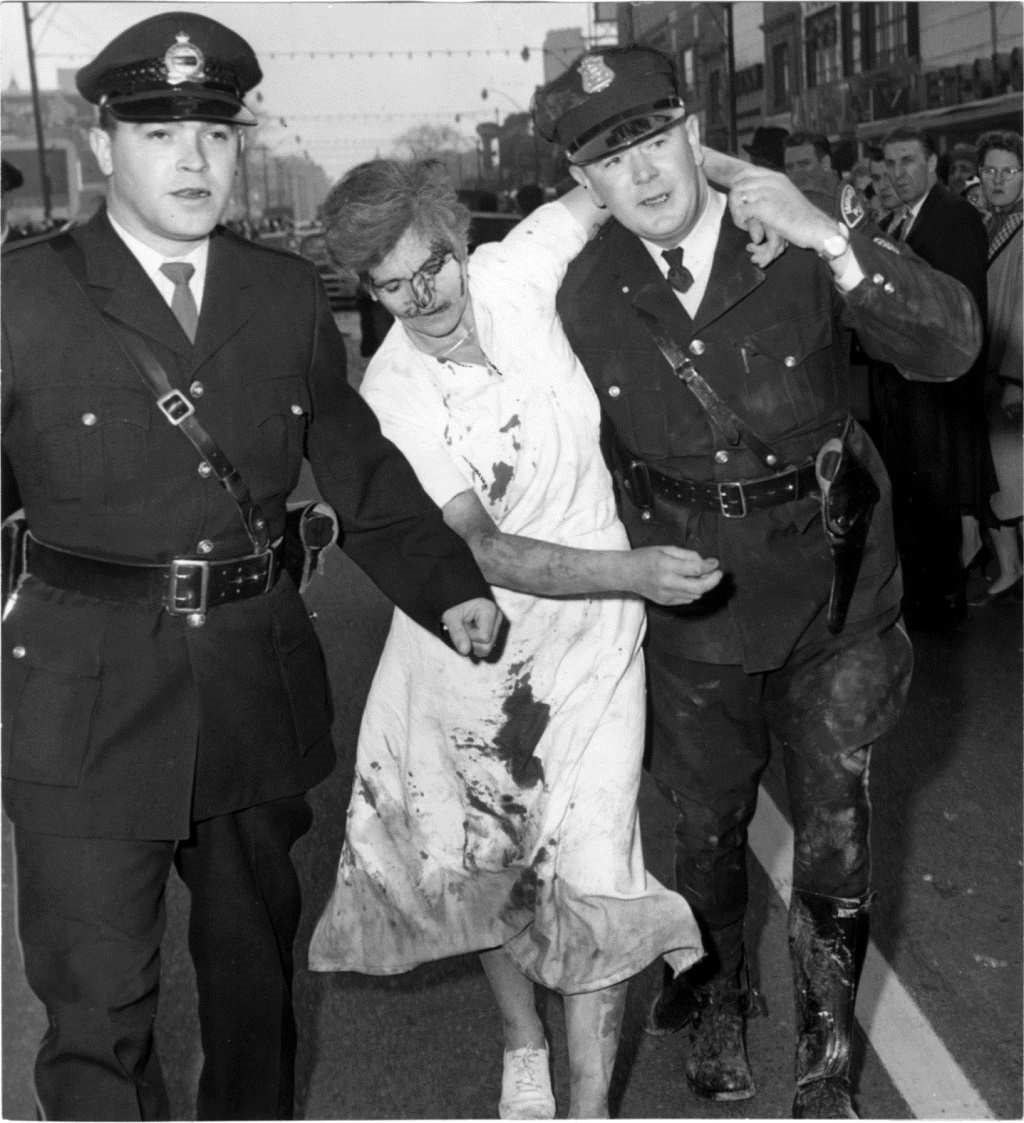 2 Officers help an injured woman after an explosion at a department store in Windsor, Ontario, Canada in 1960. The explosion was caused by a gas leak in the basement, and it blew out the first floor, causing the 2 upper floors to collapse. This disaster killed 10 people, and wounded another 100. The installing company was at fault, and as with most disasters of their time, this could have easily been prevented with either routine maintenance and inspection or proper installation to begin with.
2 Officers help an injured woman after an explosion at a department store in Windsor, Ontario, Canada in 1960. The explosion was caused by a gas leak in the basement, and it blew out the first floor, causing the 2 upper floors to collapse. This disaster killed 10 people, and wounded another 100. The installing company was at fault, and as with most disasters of their time, this could have easily been prevented with either routine maintenance and inspection or proper installation to begin with. -
52.
 julia Child doing her cooking show ‘The French Chef’, 1963.
julia Child doing her cooking show ‘The French Chef’, 1963. -
53.
 Harley Davidson creators William Harley and Arthur Davidson in 1914.
Harley Davidson creators William Harley and Arthur Davidson in 1914. -
54.
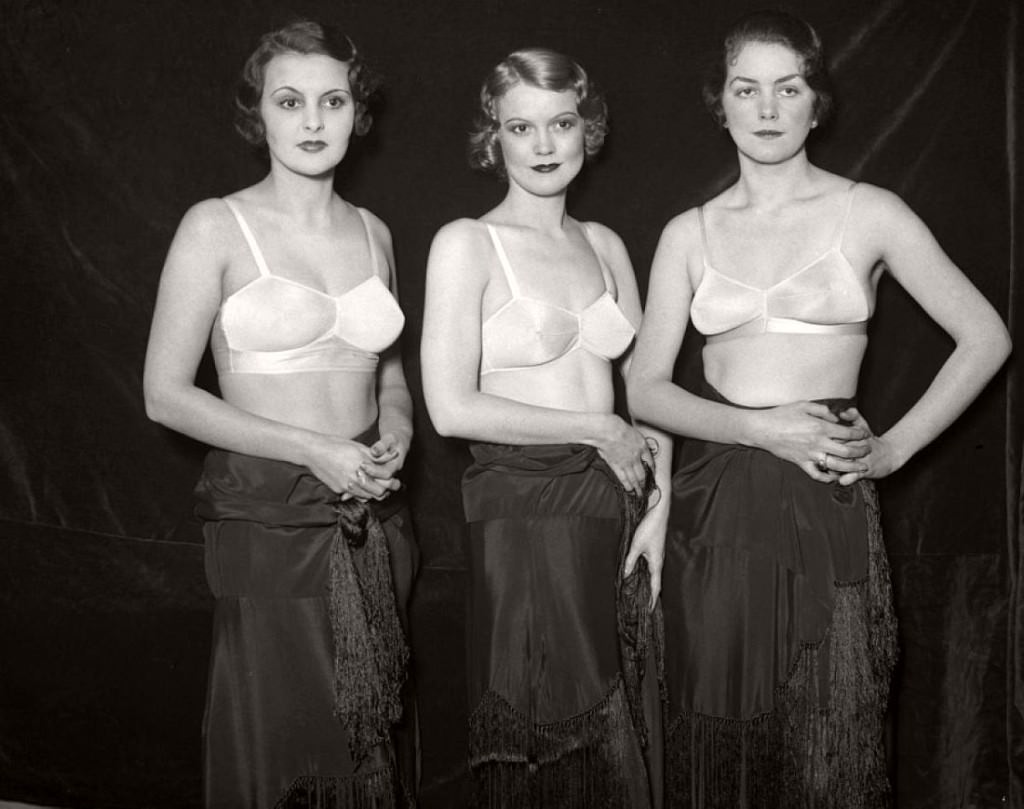 3 Models show off specially made Brassieres before Fashion Week in NYC, US in 1930. As magazines and movies took off, so did fashion, and undergarments were no different. Despite the US overall still decades away from open sexual content, many designers pushed the limits with their models for the first half century. Most of their images would not be commercially shared, but artistic and sexy images did exist well before the US adopted a more open policy towards sexually suggestive garments.
3 Models show off specially made Brassieres before Fashion Week in NYC, US in 1930. As magazines and movies took off, so did fashion, and undergarments were no different. Despite the US overall still decades away from open sexual content, many designers pushed the limits with their models for the first half century. Most of their images would not be commercially shared, but artistic and sexy images did exist well before the US adopted a more open policy towards sexually suggestive garments.
- REPLAY GALLERY
-

- 22 Interesting Photos From Our Fascinating History
- NEXT GALLERY
-
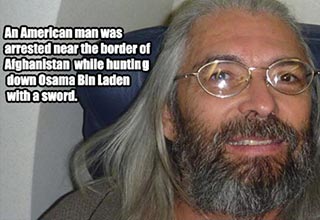
- 11 Fascinating Facts You Might Not Have Known
A man looks at murdered civilians during the Battle of Manila in the Philippines in 1945. The 1 month battle to retake the city from Japanese occupation proved costly for the populace, as the Japanese began routinely rounding up males of military age and shooting them. They also put people in concentrated areas as a form of a human shield to avoid artillery, as well as showing no regard for civilians during battles. General Douglas MacArthur did not allow these situations to deter him when he orchestrated his assaults, showing himself no sympathy towards civilian casualties. As a result, up to 240,000 civilians died in this battle. The city at times was full of the bodies of the civilian dead before it was finally liberated and those people could be buried.
54/54
1/54
Categories:
Wow



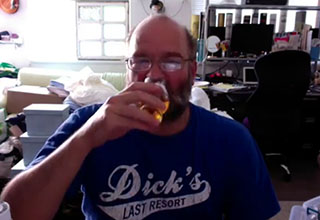
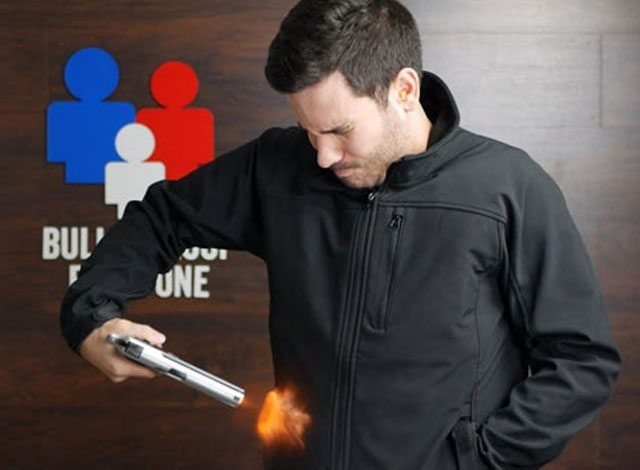

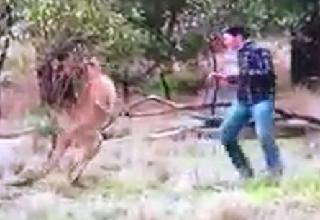
4 Comments